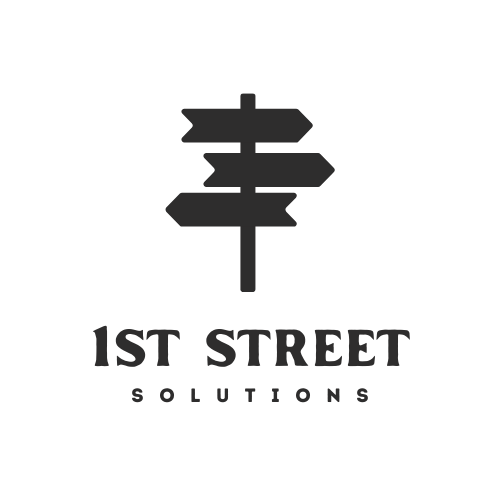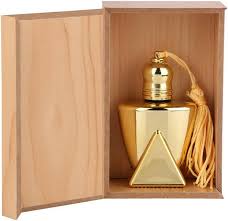Saudi Arabia Perfume Market Analysis (2025-2033) – Renub Research
Market Summary
The Saudi Arabia Perfume Market is projected to grow from US$ 2.12 billion in 2023 to US$ 3.57 billion by 2033, expanding at a CAGR of 5.94% between 2025 and 2033. This growth is attributed to increasing consumer preference for luxury and traditional Arabic fragrances, rising disposable income, evolving lifestyle choices, and the digital transformation of retail through e-commerce platforms.
Market Dynamics
Key Growth Drivers
1. Demand for High-End and Exclusive Fragrances: Premium perfumes are deeply integrated into Saudi culture. Consumers consider fragrances as extensions of their personality, symbols of prestige, and markers of social status. The preference for exclusive and long-lasting scents fuels demand for luxury offerings, especially those with oriental compositions such as oud, amber, and musk.
2. Cultural Affinity for Arabic Fragrance Profiles: Saudi Arabia’s rich perfumery heritage gives rise to a strong preference for oriental and Arabic fragrances. These scents are not only part of religious and cultural rituals but also used in daily grooming, contributing to a consistent market demand.
3. Growth in E-Commerce and Digital Channels: The proliferation of online platforms and mobile apps has simplified the perfume purchasing journey. Consumers can browse a wide variety of fragrances, compare prices, and receive recommendations. E-commerce also enables smaller and niche brands to reach consumers more effectively.
4. Young Population and Lifestyle Influence: Saudi Arabia’s youthful demographics (with 12 million people aged 20-40) are driving the fragrance market, as young consumers are increasingly brand-conscious and experimental. Fragrance usage is also being influenced by global fashion, beauty trends, and social media marketing.
Market Challenges
1. Intense Market Competition: The fragrance industry in Saudi Arabia is saturated with both local and international brands. High brand loyalty and consumer trust in heritage brands create high entry barriers for newcomers. Companies must invest heavily in marketing, influencer tie-ups, and sensory branding.
2. High Import Costs: Many premium and niche perfumes are imported from Europe and face additional costs due to tariffs, transportation, and retail markups. This inflates prices, restricting accessibility to luxury fragrances among mid-income consumers and discouraging new entrants.
- Related Reports
- Saudi Arabia Whiskey Market Size and Share Analysis – Growth Trends and Forecast Report 2025-2033
- Saudi Arabia Wine Market Size and Share Analysis – Growth Trends and Forecast Report 2025-2033
- Saudi Arabia Foodservice Market Size and Share Analysis – Growth Trends and Forecast Report 2025-2033
Market Segmentation
By Type
1. Eau de Parfum (EDP): Eau de Parfum dominates the market due to its high oil concentration and superior longevity—attributes well-suited for the Saudi climate. Consumers favor EDPs with rich Arabic notes, including oud, rose, and sandalwood. Popular among professionals and gift buyers.
2. Eau de Toilette (EDT): ETDs appeal to consumers seeking versatile, everyday wear fragrances. Though lighter than EDPs, they provide adequate scent strength for moderate climates and office use.
3. Eau de Cologne: Eau de Cologne (EDC) is gaining traction, particularly among younger consumers who prefer light, affordable fragrances. The layering trend and the increasing number of local cologne brands support this segment’s growth.
4. Eau Fraiche: This segment caters to budget-friendly buyers and consumers looking for subtle, refreshing scents. While not dominant, Eau Fraiche is growing gradually as personal grooming awareness expands.
By Value
1. Luxury: Luxury perfumes make up the bulk of the market, especially given Saudi Arabia’s high disposable income and affinity for premium products. Designer brands and niche houses dominate this space, often used as high-end gifts or social status symbols.
2. Mass Market: This segment appeals to middle-income and price-sensitive consumers. Local companies are capitalizing on cultural scent preferences and affordable price points, distributing through supermarkets and local perfumeries.
By Gender
1. Male Perfume Market: Men in Saudi Arabia frequently use perfumes, influenced by grooming traditions and cultural practices. Popular scents include oud, musk, amber, and sandalwood. The gifting culture and the role of fragrance in social identity fuel this segment.
2. Female Perfume Market: Saudi women are active consumers of perfumes, favoring floral, fruity, and spicy profiles. Fragrance plays a vital role in their personal care routine. Women’s increasing participation in the workforce and rising disposable incomes are enhancing demand.
3. Unisex Fragrances: Unisex fragrances are gaining ground, especially among millennials and Gen Z, who value gender-neutral branding and versatile scents. Brands offering minimalist packaging and eco-conscious formulations are thriving in this niche.
Competitive Landscape
Saudi Arabia’s perfume market is a blend of well-entrenched local players and high-profile global brands.
Notable Local Brands:
- Abdul Samad Al Qurashi
- Arabian Oud
- Al Haramain
Global Brands Active in the Market:
- Chanel
- Dior
- Tom Ford
- Gucci
Key Developments:
- Chalhoub Group’s Ghawali launched a flagship outlet with a contemporary Arabic aesthetic in 2023.
- Ahmed Perfume announced expansion across GCC in 2024.
- Roberto Cavalli Perfumes partnership with Chalhoub Group to enhance regional presence (2023).
- Perfumes of the East Exhibition held in Riyadh (2024) to celebrate regional olfactory traditions.
Market Outlook
The Saudi Arabia perfume market is poised for continued growth, driven by cultural affinity, luxury consumption habits, and digital transformation. While challenges around pricing and competition persist, innovation, sustainability, and personalization will be the cornerstones for future market success. As consumers seek bespoke scents, heritage-rich experiences, and convenient shopping, both legacy and emerging brands must adapt with agility and local relevance.
Key Questions Answered
- What is the current and forecasted size of the Saudi Arabia perfume market?
- What are the main drivers of growth in this market?
- Which product types dominate the Saudi fragrance industry?
- How is e-commerce transforming perfume sales in the kingdom?
- What challenges are faced by perfume manufacturers and sellers?
- Which segments—by gender and value—are expanding the fastest?
- What are the most popular fragrance types and ingredients?
- How do consumer preferences differ across demographic groups?
- Who are the key local and international players?
- What role does culture play in shaping fragrance trends in Saudi Arabia?



